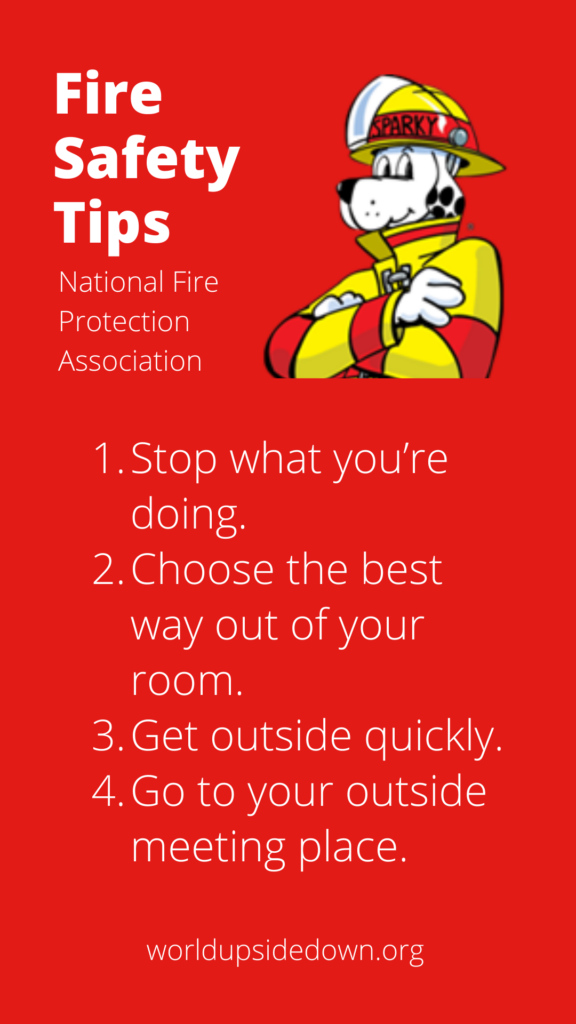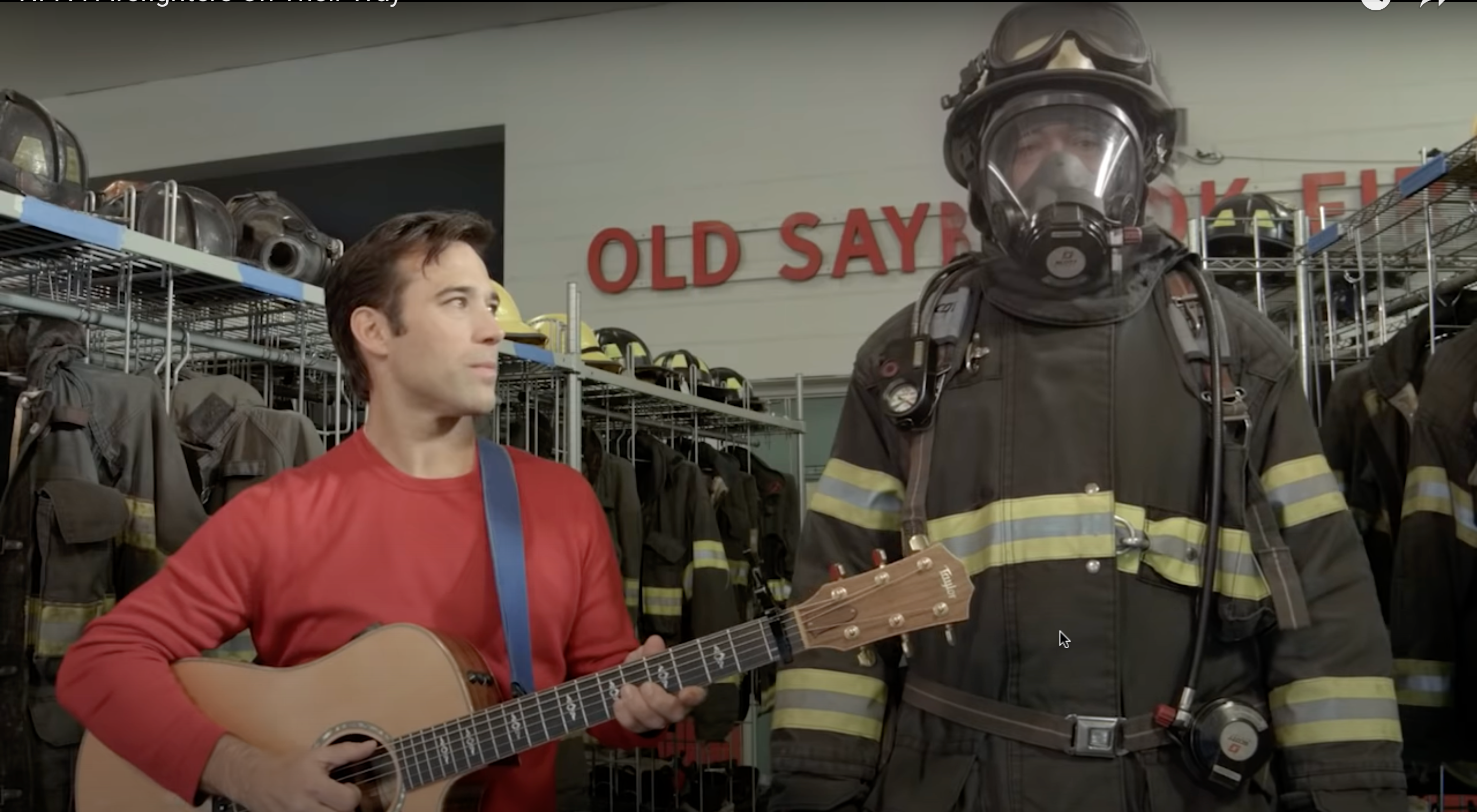Are you looking for some songs about fire safety and activities for fire prevention week that will be fun and also educational for your elementary students? We have two units with PBS Kids celebrity SteveSongs that use songs about fire safety to remind kids how to keep themselves and their families safe! You can get them today through our free elementary music membership!

Free elementary music curriculum
This free elementary music curriculum unit is perfect for elementary music teachers or classroom teachers looking to integrate music activities kids will love. As a member of our community, you get lesson plans for elementary music, videos for elementary music class songs, and everything you need to make teaching music fun and easy! Join our free elementary music membership today!
Meet the Teaching Artist: PBS Kids Celebrity SteveSongs
Steve Roslonek of SteveSongs has been writing and performing his award-winning music for kids and families for more than fifteen years. Roslonek blends participatory songs, clever stories, and great melodies. They are what the Boston Globe called “not just a musical journey but an entertaining, interactive and educational one.”
In May 2008, Steve took on the exciting new role of “Mr. Steve,” co-host of the PBS KIDS preschool destination. PBS Kids features his music on popular shows like Curious George, Clifford the Big Red Dog, Super Why, The Cat in the Hat Knows a Lot About That and Peg + Cat. Steve performs original interactive songs that reinforce the day’s curriculum theme. Watch this video to find out about how Steve has partnered with World Upside Down to create music units for elementary teachers!
Songs About Fire Safety: Little Rosalie
Our Little Rosalie: Fire Safety Unit covers the National Fire Protection Association’s four safety tips, song structure variations, and song structure terms.

Fire Safety Tips
The National Fire Protection Association recommends four fire safety tips for kids. Little Rosalie helps students remember them through song.
- Stop what you’re doing.
- Choose the best way out of your room.
- Get outside quickly.
- Go to your outside meeting place.
Song Structure Terms and Variations
Little Rosalie has three variations in the chorus. Students analyze each variation, compare and contrast the similarities and differences. The unit helps students define two musical terms: bridge and echo. Then they analyze the use of the bridge and echo in the Little Rosalie song.
Free elementary music curriculum kit: SteveSongs fire safety unit
Teaching elementary music just got super fun and easy for you with a variety of music activities kids will love! Check out what you’ll get with your free elementary music curriculum kit:
- lesson plans for elementary music
- digital tool kit
- lyrics to the song Little Rosalie
- national and common core standards
- additional fire prevention resources
- fire safety coloring page kit by U.S. Fire Administration and by Sesame Street
Editable Google Slides include:
- Meet the Artist video – a greeting from SteveSongs
- National Fire Protection Association video teaching how to identify and eliminate fire hazards
- Little Rosalie song video – divided into sections for easy learning
- Quick review multiple-choice or true/false questions to help students review what they learn in the videos
- Definitions and inquiry-based learning questions to help students analyze the structure and elements of a song
Songs About Fire Safety: Firefighters On the Way
Our Firefighters On the Way: Fire Safety Unit covers the National Fire Protection Association’s steps on how to identify fire hazards and eliminate them. Students also learn song structure pattern, and song writing strategies.

Fire Safety Tips
The National Fire Protection Association helps students identify and eliminate fire safety hazards. Firefighters On the Way helps students remember them through song.
- Too many plugs
- A lighter or matches on the table
- Too much stuff blocking the exit
- A space heater too close to the chair
It also helps students identify three steps they can take to make a room safe:
- A working smoke alarm
- Escape plan
- Two exits from the room
Song Structure Terms and Variations
Firefighters On the Way gives students a look at two ways SteveSongs uses repetition as a song-writing technique. Then they analyze how repetition can make a song popular and easy to remember for singers.The song Firefighters On the Way shows students how to use a pre-chorus in a song. Students learn how to define the term and analyze how the pre-chorus builds the chorus and enhances the song. They can also identify a scat in the song, define the musical term scat and practice the scat.
Free elementary music curriculum kit: SteveSongs fire safety unit
Teaching elementary music just got super fun and easy for you with a variety of music activities kids will love! Check out what you’ll get with your free elementary music curriculum kit:
- lesson plans for elementary music
- digital tool kit
- lyrics to the song Firefighters On The Way
- national and common core standards
- additional fire prevention resources
- fire safety coloring page kit by U.S. Fire Administration and by Sesame Street
Editable Google Slides include:
- Meet the Artist video – a greeting from SteveSongs
- National Fire Protection Association video teaching how to identify and eliminate fire hazards
- Firefighters On The Way song video – divided into sections for easy learning
- Quick review multiple-choice or true/false questions to help students review what they learn in the videos
- Definitions and inquiry-based learning questions to help students analyze the structure and elements of a song
How can I get these amazing music activities for Fire Prevention Week?
Elementary music teachers or classroom teachers looking to integrate music activities kids can join our elementary music membership for free! As a member of our community, you get lesson plans for elementary music, videos for elementary music class songs, and everything you need to make teaching music fun and easy! Sign up today!
More Resources and Tips for Fire Safety
Learn about how the National Fire Prevention Association started Fire Prevention Week, some stats on fire safety, and some amazing resources that you can use with your elementary students.
How Fire Prevention Week Got Started
Since 1922, the NFPA has sponsored the public observance of Fire Prevention Week. In 1925, President Calvin Coolidge proclaimed Fire Prevention Week a national observance, making it the longest-running public health observance in our country. During Fire Prevention Week, children, adults, and teachers learn how to stay safe in case of a fire. Firefighters provide lifesaving public education in an effort to drastically decrease casualties caused by fires.
Fire Prevention Week is observed each year during the week of October 9th in commemoration of the Great Chicago Fire. This fire began on October 8, 1871 and caused devastating damage. The Great Chicago Fire killed more than 250 people, left 100,000 homeless, destroyed more than 17,400 structures, and burned more than 2,000 acres of land.

Stats on Fire Safety
Local fire departments responded to 1,338,500 fires in 2020. These fires caused 3,500 civilian deaths, 15,200 civilian injuries and $21.9 billion in property damage. Every 23 seconds, a fire department in the United States responds to a fire somewhere in the nation. A fire occurs in a structure at the rate of one every 64 seconds, and a home fire occurs every 89 seconds.
Seventy-four percent of all fire deaths were caused by home fires. This includes the 64 percent that resulted from fires in one- or two-family homes. It also includes the 10 percent caused by fires in apartments or other multi-family housing. Eighteen percent of fire deaths were caused by vehicle fires.
Click here for the official report on Fire Loss in the United States.
Frequently Asked Questions
What’s the difference between smoke alarms and carbon monoxide (CO) alarms? Why do I need both?
Smoke alarms sense smoke well before you can, alerting you to danger. In the event of fire, you may have as little as 2 minutes to escape safely. This is why smoke alarms need to be in every bedroom, outside of the sleeping areas (like a hallway), and on each level (including the basement). Do not put smoke alarms in your kitchen or bathrooms.
Carbon monoxide is an odorless, colorless gas that displaces oxygen in your body and brain. It can render you unconscious before you even realize something is happening to you. Without vital oxygen, you are at risk of death from carbon monoxide poisoning in a short time. CO alarms detect the presence of carbon monoxide and alert you so you can get out, call 9-1-1, and let the professionals check your home.
How do I know which smoke and CO alarm to choose for my home?
Choose an alarm that is listed with a testing laboratory, meaning it has met certain standards for protection. You can select a unit that requires yearly changing of batteries, or a 10-year unit that you change out at the end of the 10 years. Either option will provide protection.
CO alarms also have a battery backup. Choose one that is listed with a testing laboratory. For the best protection, use combination smoke and carbon monoxide alarms that are interconnected throughout the home. These can be installed by a qualified electrician, so that when one sounds, they all sound. This ensures you can hear the alarm no matter where in your home the alarm originates.
Importance of Fire Prevention
In a fire, mere seconds can mean the difference between a safe escape and a tragedy. Fire safety education isn’t just for school children. Teenagers, adults, and the elderly are also at risk in fires. This is why it’s so important for every member of the community to make sure they understand how to stay safe in case of a fire. We invite you to take some time every October during Fire Prevention Week to do just that!
On the National Fire Prevention Association website, you’ll find loads of educational resources to make sure that every person knows what to do in case of a fire. We have everything from apps to videos to printables and much more. Make sure you have the resources you need to keep your family, your community, and your city safe.
Family Action Plan in English and Spanish
Learn the Sounds of Fire Safety






